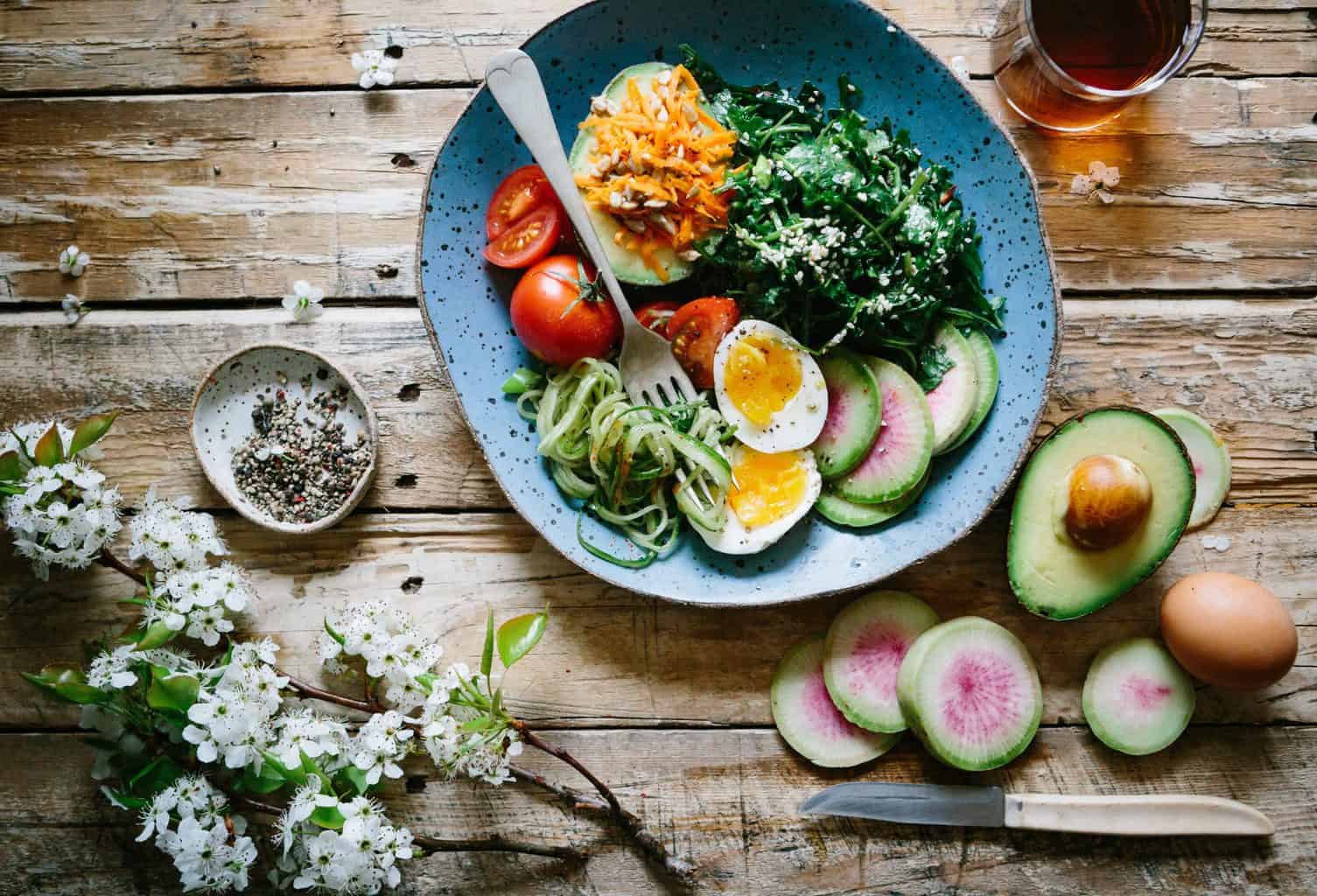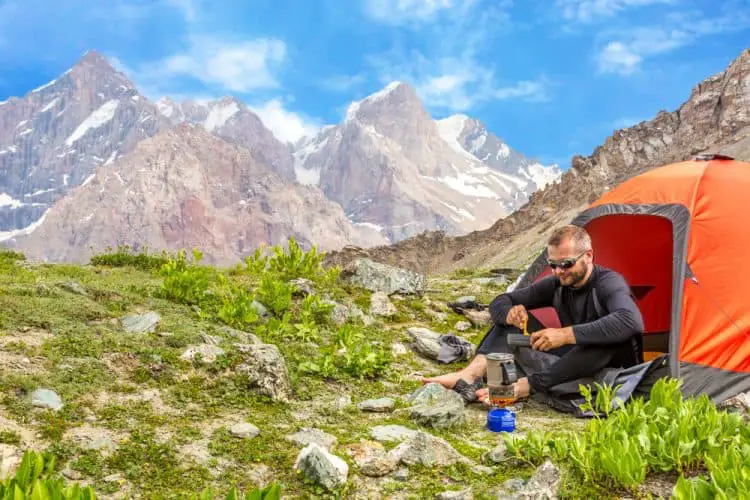Nutrition Plan For Beginner Hikers (Simple And Efficient)
Stay energized and healthy on the trail with this exemplary nutrition plan for beginner hikers. You are what you eat! Read on.
We all love hiking. That’s why we’re here, isn’t it?
However, especially if you’re a beginner hiker, you may have trouble figuring out a proper nutrition plan for your needs. If that’s the case for you, then you’ll love what’s about to follow. Search no more.
Actually, do look further – research never hurts, and you may always find something new. This list of the 7 best hiking meals may also interest you, for instance.
But still, let’s begin. There are some tips that you’d certainly find useful.
Preparing In Advance
Many factors will determine your final nutrition plan, so there’s no simple, one-size-fits-all solution. Such factors are:
- What your day will look like. Your body will have very different needs depending on your day – many daily miles on rugged terrain are more taxing than brief, comfortable strolls down a flat trail.
- How long your trip will be. Brief hikes or one-day trips are much less demanding than camping or multi-day trips.
- What your route will be. It’s much easier to ensure proper nutrition if your route includes towns, villages, or any place where food may be found – outside of your own backpack.
- What your group size will be. A smaller group and even solo hikes can be much easier to plan for, while larger groups (if they do share meals) can split the weight and cookware better.
- Your own size, weight, and nutritional needs. No two bodies are exactly the same. Both how well your body is adjusted to taxing activity and what your normal calorie intake is play a huge role.
A generic rule of thumb is that, typically, you will want around 500 to 1000 calories a day over what you normally eat. Given that the recommended daily calorie intake for an adult is 2000 to 2500, you’ll want to aim for roughly 2500 to 3500 calories a day.
This will still depend on all the factors above, but it’s an accurate starting point. For specifics, read on.
Hydration
Before discussing meals, let’s address hydration. Competent authorities always stress that it is absolutely vital to stay hydrated during any demanding physical activity. This rule must naturally apply to hiking as well.
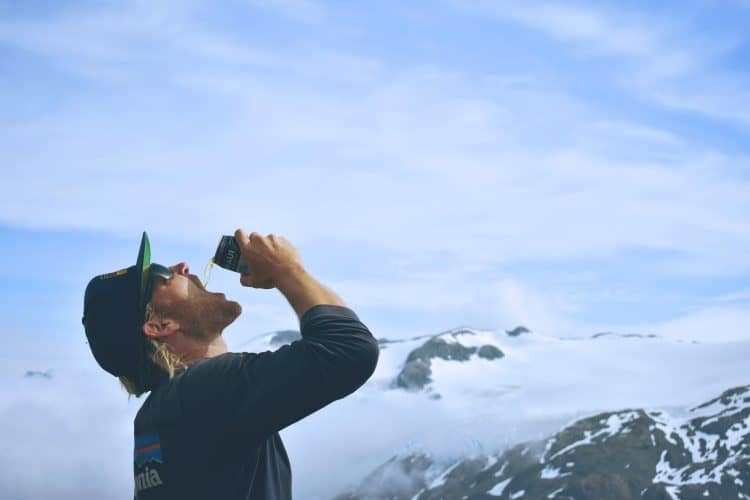
Hydration is absolutely essential.
It’s a good idea to drink about 4 cups, or roughly 14 to 22 ounces of water before a hike – ideally, you’d rather do so about 2 hours before you begin.
Not only will you have less to carry this way, but you will also ensure that you start your hike properly hydrated.
Then, make sure you drink about 2 cups of fluid every hour while on the hike – or about 6 to 12 ounces every 15 to 20 minutes, if you prefer.
If you cannot be sure that you can carry that much due to your trip’s length, make sure your route will get you where there is access to clean drinking water.
Many prefer taking hydration backpacks because it’s easier to drink water on the go. Take care to stay hydrated even if you’re not feeling thirsty.
Thirst is, in fact, an early symptom of dehydration. If you’re feeling thirsty, you’re already about 3% dehydrated.
This will decrease your endurance and make your trip harder than it should be, so it’s always best to avoid it if you can help it.
After the hike is over, continue drinking similar amounts for a few hours to make sure your body fully recovers and re-hydrates.
Breakfast
A good breakfast is always a great way to start a demanding day, and your nutrition plan should reflect this.
Ideally, you should eat about one hour before hitting the trail and aim for 300 to 500 calories (or more, depending on your plan).
This will ensure your body has enough fuel to begin, but also that it has enough time to digest the food before you do. A good start is a reassurance that you will be in a better position to receive the benefits of hiking more fully.
Your breakfast options should be high in carbohydrates, average in protein, and low in fiber and fat. Some such options can be oatmeal, perhaps with dried fruit, granola, scrambled eggs and cheese, and fresh fruit, among others
Here's a short and quite informative video that gives good ideas for a delicious and strong breakfast.

Fresh fruit and energy bars can also be a good option if you don’t have time to sit down and eat comfortably.
Lunch
A typical hiking lunch tends to be easy to prepare and shouldn’t need a stove. Some hikers prefer to consume snacks throughout the day instead, and that’s also an option to keep your momentum.
But if you prefer to stand around and have a proper lunch, you could aim for around 300 to 500 calories as well.
Food that is easy to pack and doesn’t take much preparation, if any, is ideal for your nutrition plan: crackers, biscuits, tortillas, dense bread, and cheese are good solutions. Tahini, honey, jam, hummus, and other such options should also be considered.
If you eat meat, you may also want to add dried meats, salami, or tuna, and perhaps condiments. If you’re a vegetarian instead, this list of vegetarian hiking meals may interest you.
Dinner
Dinner is probably the one meal where you’re most likely to be comfortable. The day is over, and you can make up for lost calories. 700 to 900 calories should be your aim here, and this is the meal where you can best satisfy your taste buds.
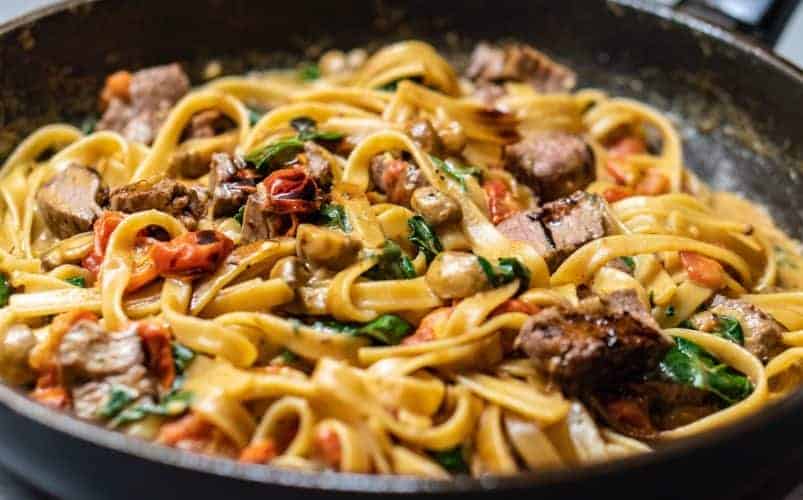
Pasta and cheese make take a nutritious dinner.
Rice, pasta, lentils, mashed potatoes, noodles, dried vegetables, cheddar or gouda cheese.
If you eat meat, you can also consider jerky, salami, and other meats, as well as fish like sardines, salmon, and tuna.
You will still want to keep in mind that your meals shouldn’t require too much fuel to prepare, since it’s a precious resource.
Snacks
At this point, you may be wondering why all 3 meals combined only amount to 1300 to 1900 calories in this nutrition plan.
The answer is simple - snacks. The body can only process so many calories an hour while exercising, so ideally, you’ll want to eat something every hour.
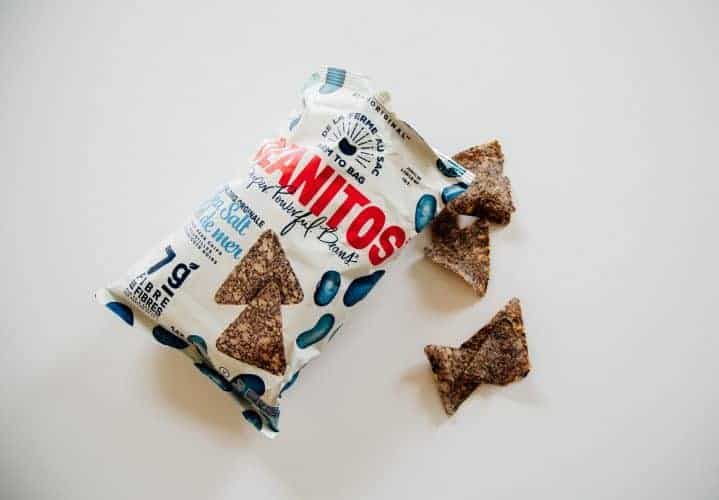
Snacks are your best, regular source of needed calories.
Doing so will keep your energy levels steady while not stressing the stomach too much, and that snacks can be packed easily only helps.
Make sure that you consume at least a few high-calorie snacks, such as Snickers bars, M&Ms bags, and energy bars, instead of just fruit – the goal is to make up for the calories that main meals can’t afford to have.
Your average such snack should have around 200 to 250 calories at least, so it should be easy to reach your desirable daily calorie intake that way.
Conclusion
Many believe that hiking food is often tasteless and boring as a tradeoff for being lightweight and easy to pack. That’s far from truth.
There are meals that you can fully enjoy just like any normal food. The key is to inform yourself and bring the right combination of tasty and nutritive repast based entirely on your personal preference. Now enjoy your hike! And don't forget to bring a hammock.
What's your favorite food to eat on a hike? Leave a comment below!
Asen Stoyanchev
Founder of this website, Asen is a passionate hiker and writer who is also a gear nerd. He’s been featured on many established hiking websites where he gives hiking advice & tips. When he is not trekking with his family or friends, he is writing articles and product reviews. Asen spends most of his time in Bulgaria but he constantly travels the world in seek of more unforgettable experiences. Read more about Asen here.

